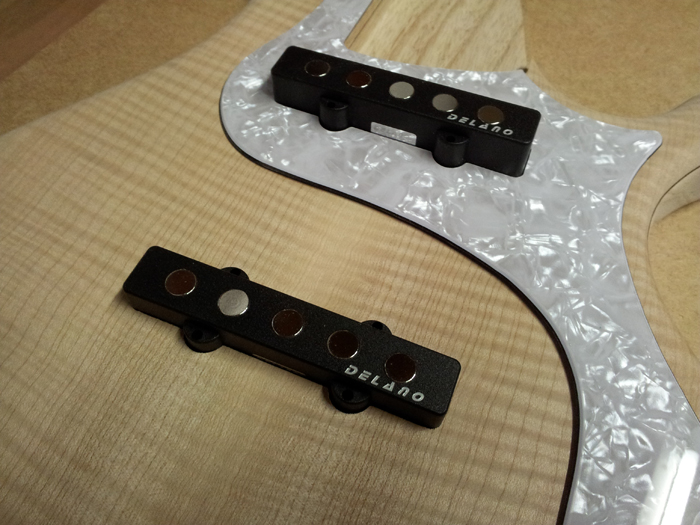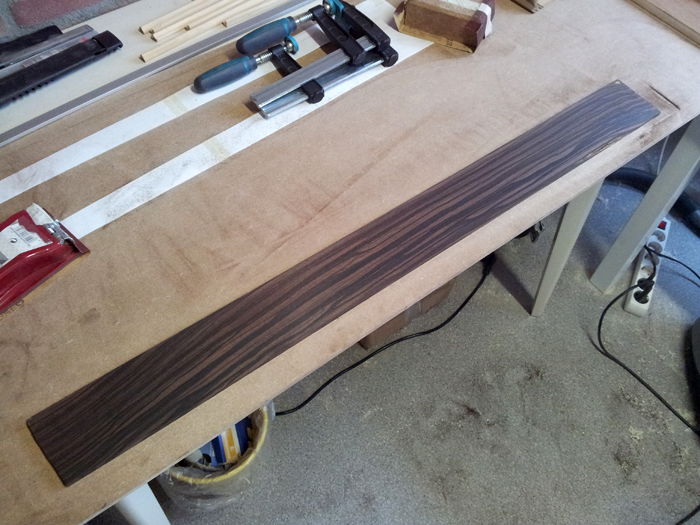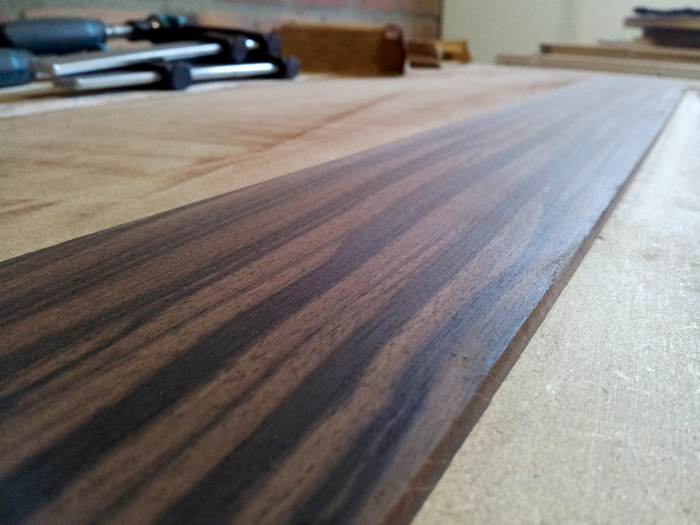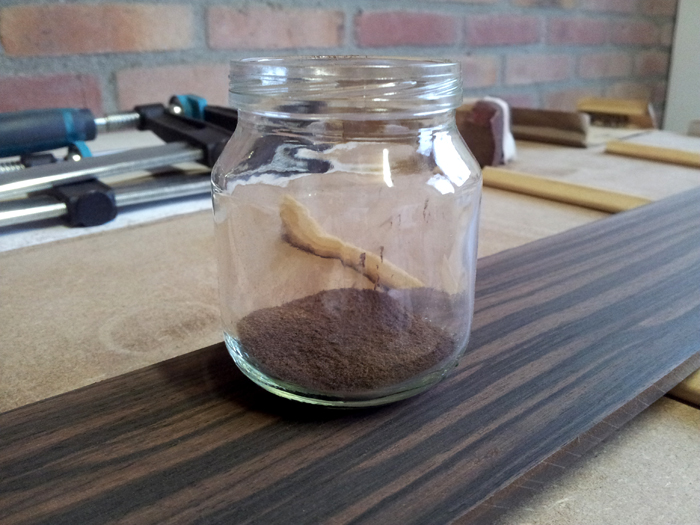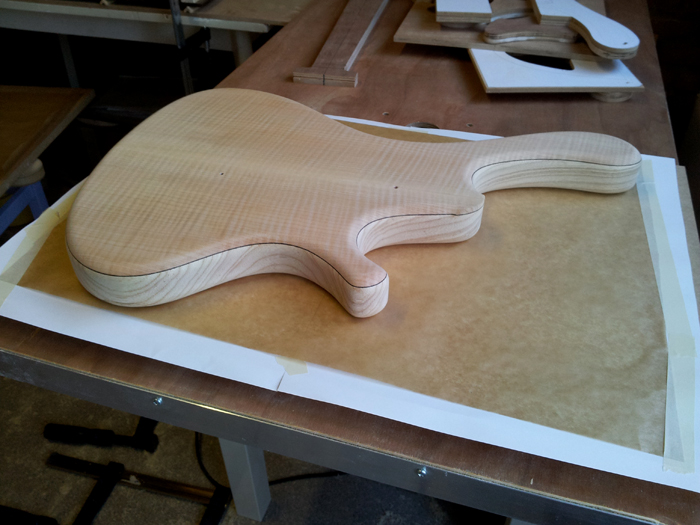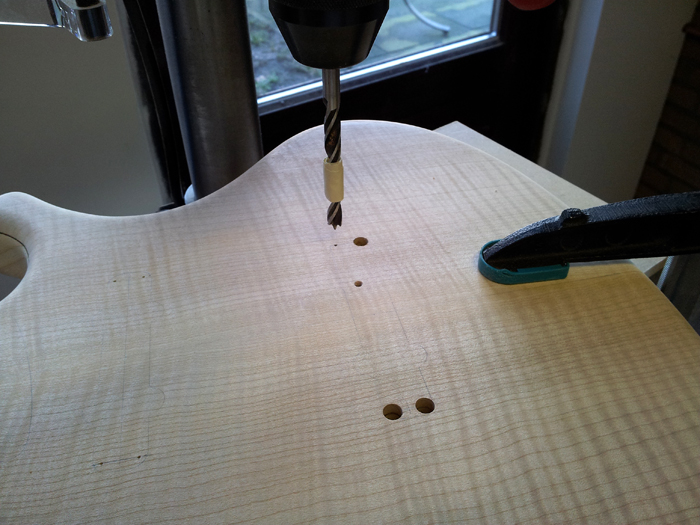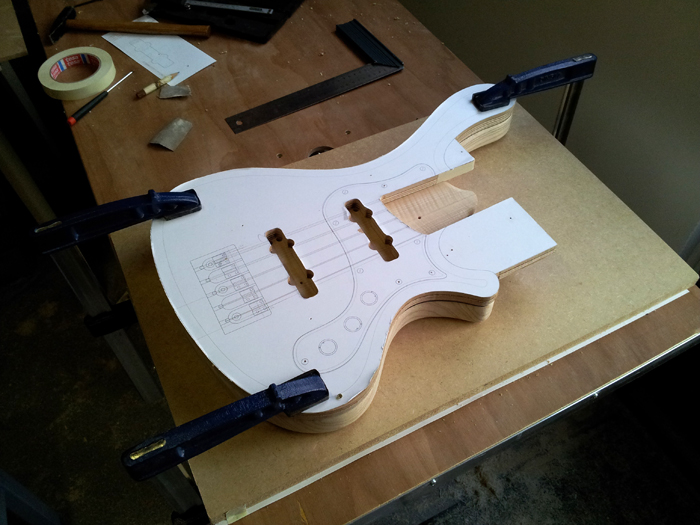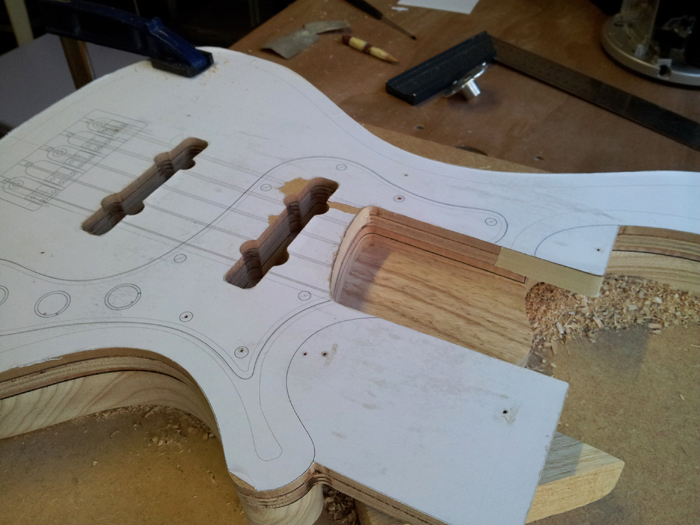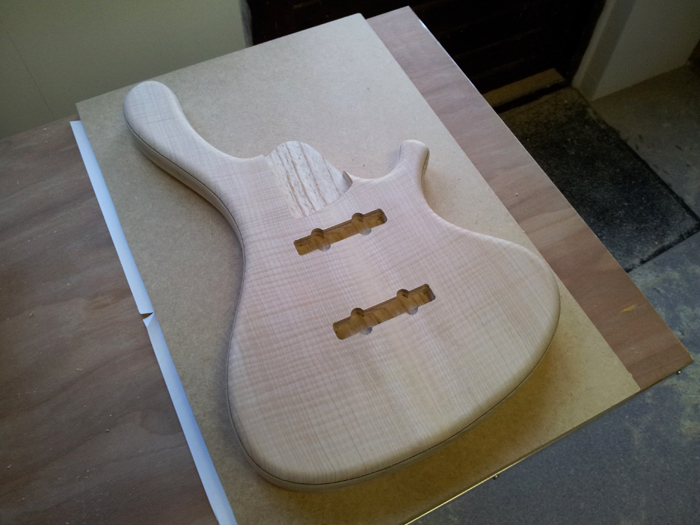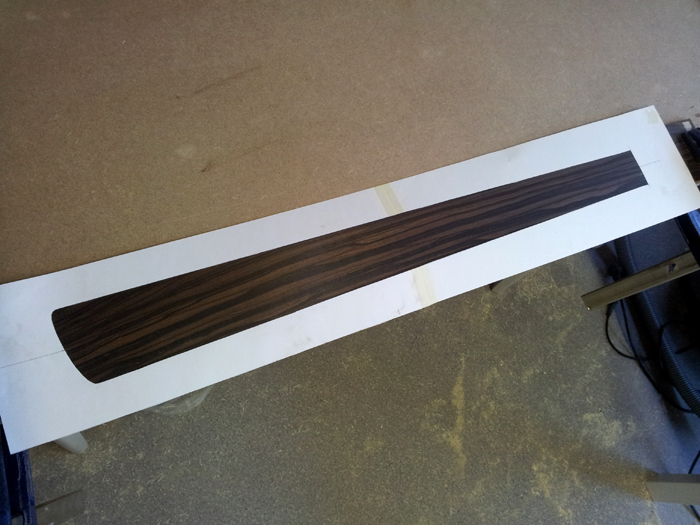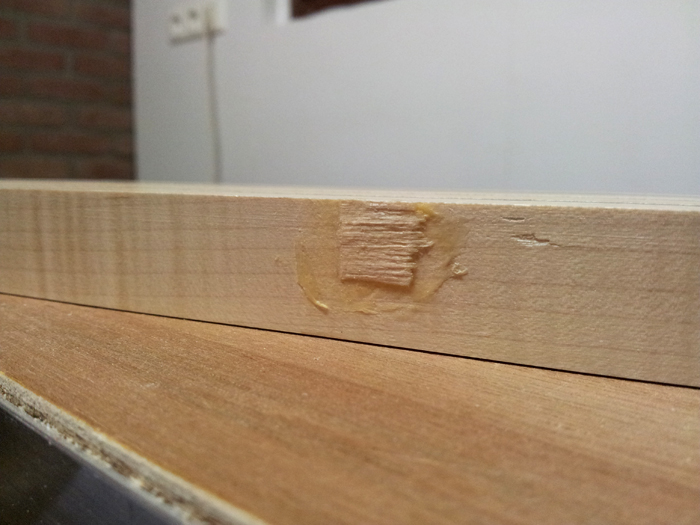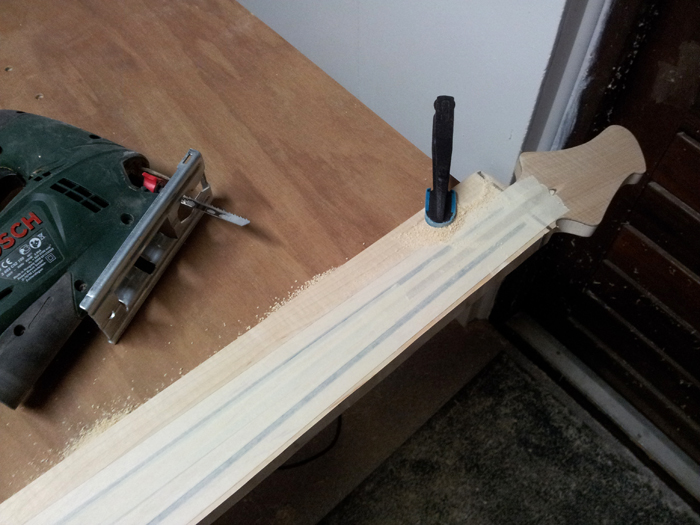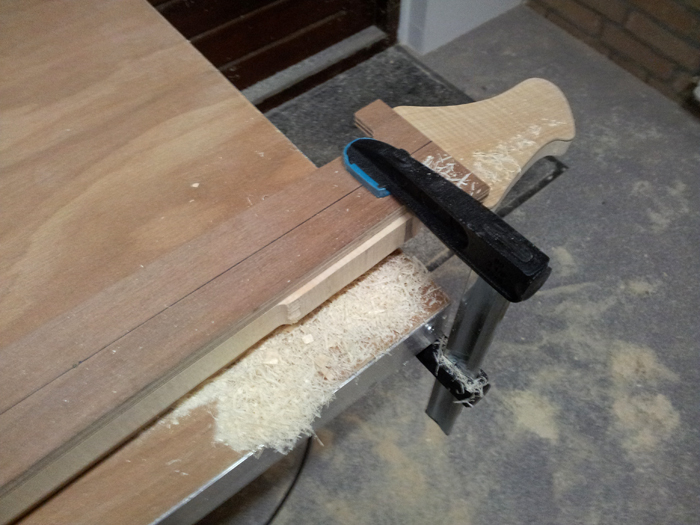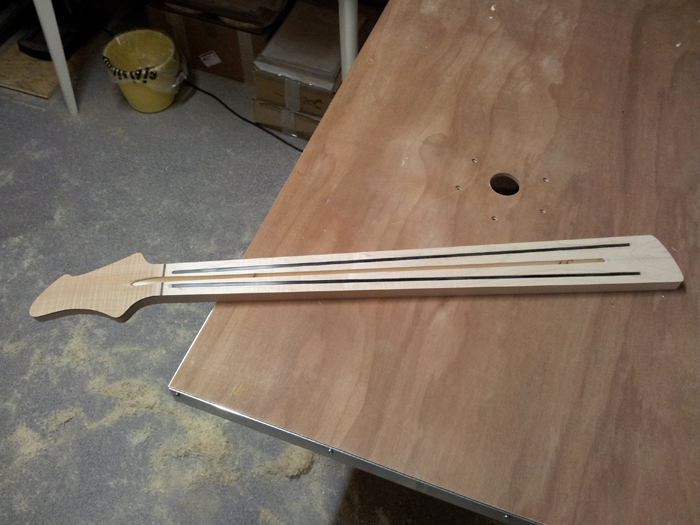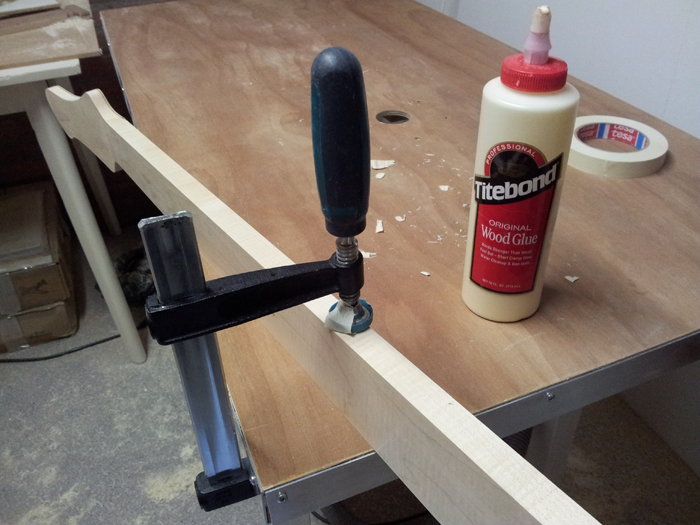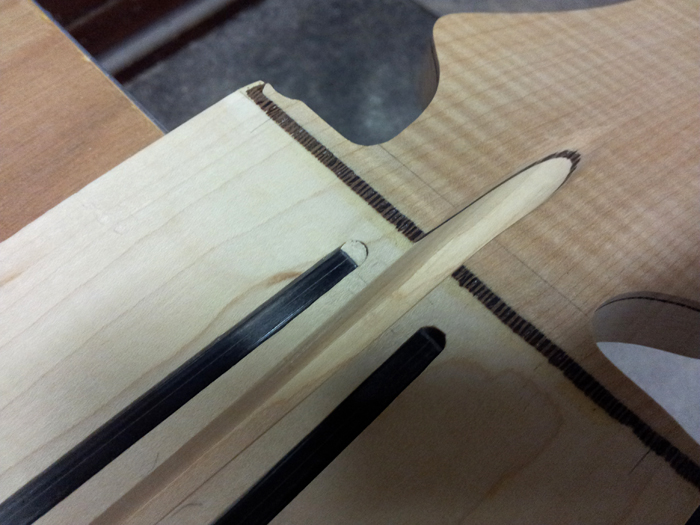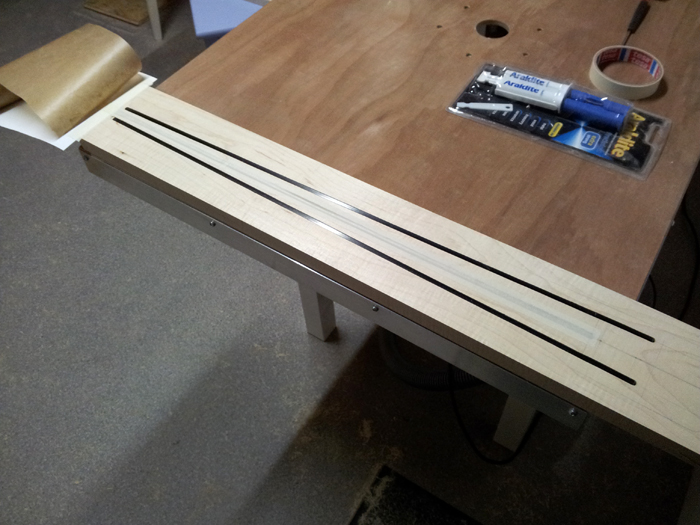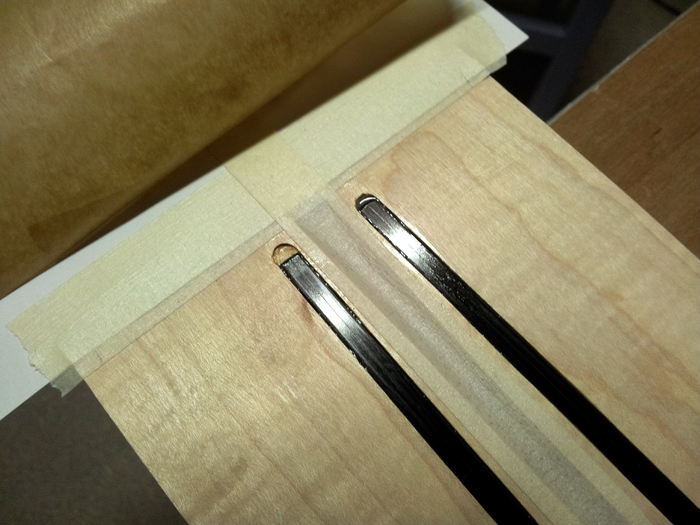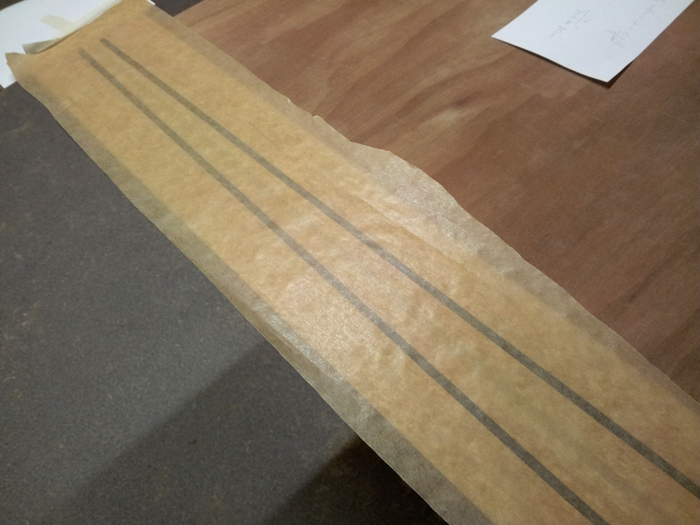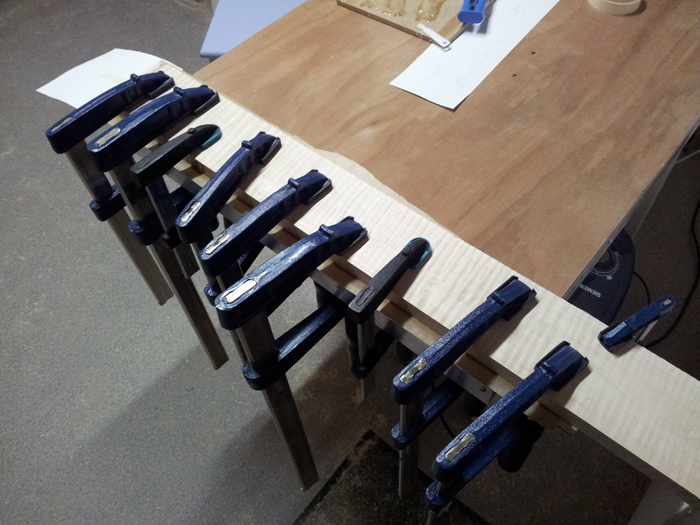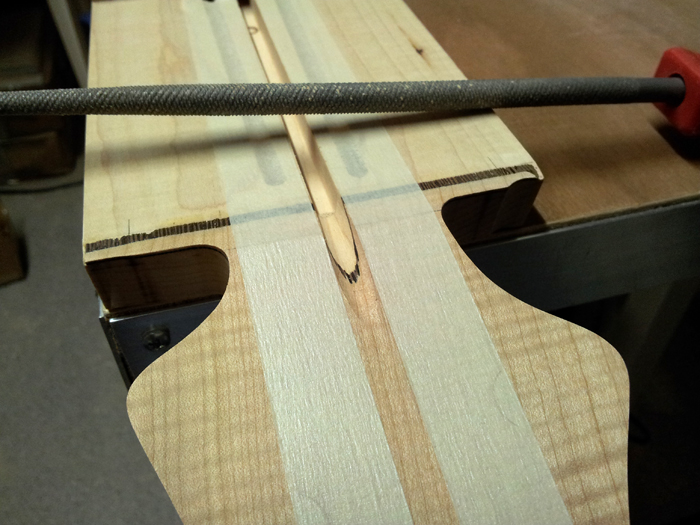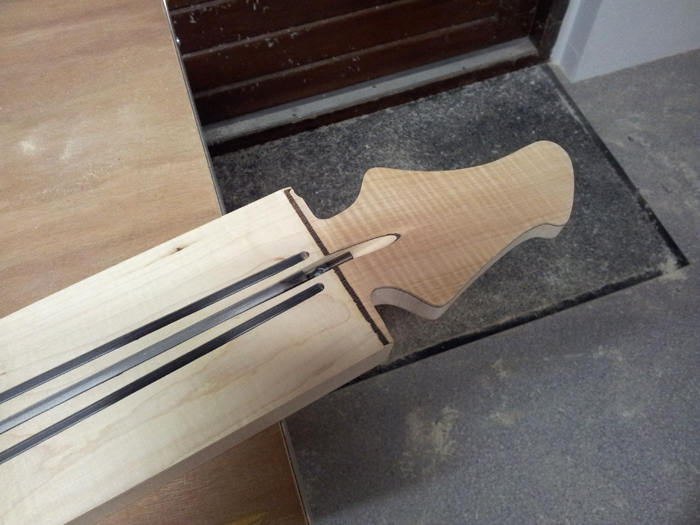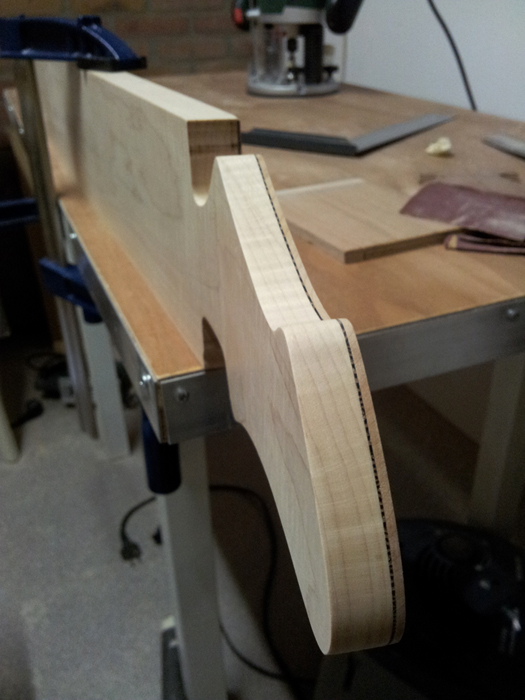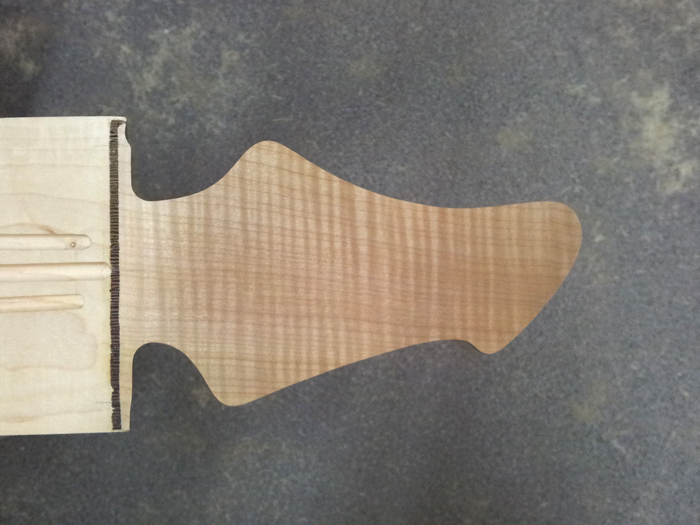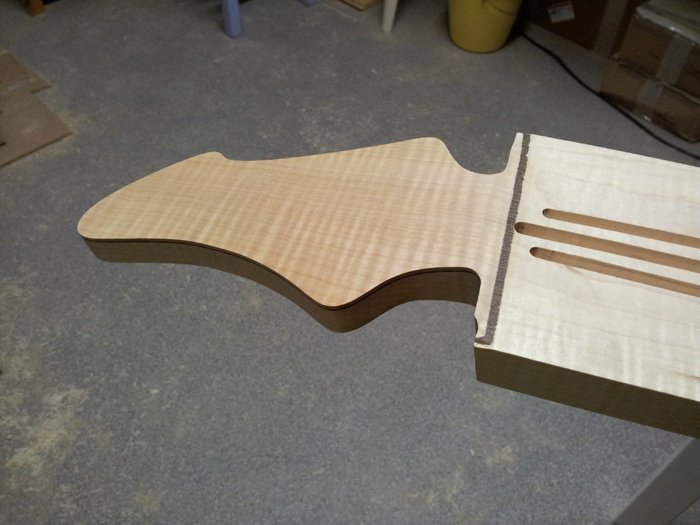I tried to fit the pickups – they do not fit well yet because I did not yet clean up the routes with a chisel and some sandpaper, but I’ve got a good starting point. While at it, I almost started to doubt if I should dye the body… but I still think red looks killer and I want to get experience with that part of guitar building too.
The fingerboard blank wasn’t flat, I ordered it at 7 mm thickness, but the thickness varied between 6.30 and 6.95 mm… that’s over half a mm and to my standards not good. So I took my ‘planing jig’ and routed the blank to 6.35 mm:
You could see some minor router marks, but the result was pretty nice. Thickness now varies from 6.25 to 6.45 mm, which lives up to my standards and it’s close to the desired thickness of 1/4". Then, I sanded it with 40 grit, followed by 80 grit, to remove the router marks. It’s looking great already:
You’ve gotta love ebony! At least, I do!
And save the dust…

